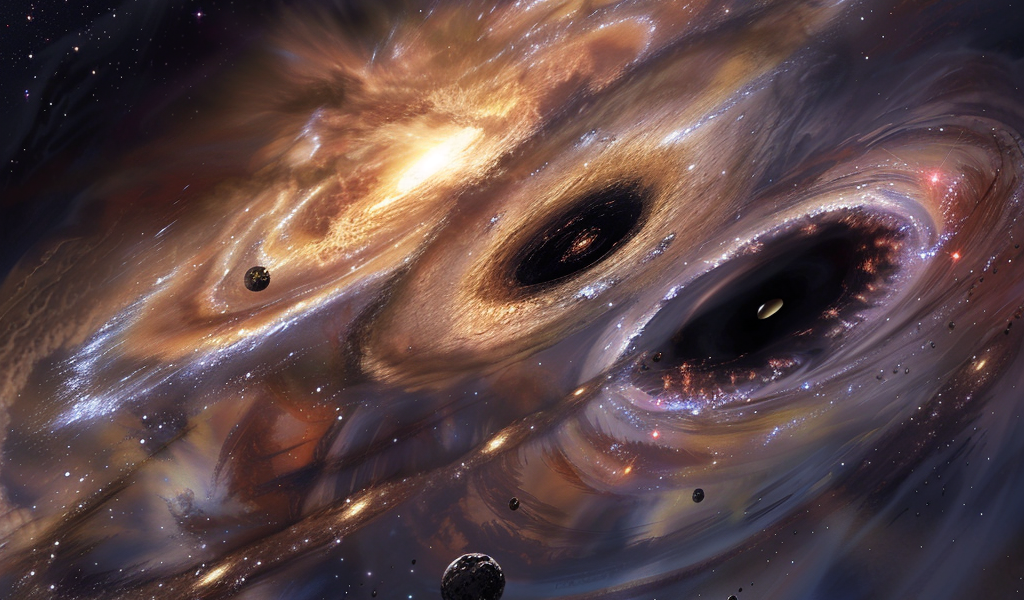Astrophysicists have long pondered the enigmatic processes governing the merger of supermassive black holes, a phenomenon that has eluded definitive explanation for decades. Recent research suggests that an exotic form of dark matter may hold the key to unraveling this cosmic mystery, particularly the challenge known as the final parsec problem.
When two galaxies collide, their respective supermassive black holes typically enter a phase of mutual orbit. Over millions of years, these colossal entities engage in gravitational interactions with surrounding matter. This interaction results in the expulsion of nearby material, generating friction that gradually reduces the black holes’ orbital velocity. Consequently, they spiral closer together, inching towards a potential merger.
However, as these black holes draw near, they encounter a significant hurdle. The final parsec problem arises because, theoretically, the black holes should not be able to close the remaining distance required for a merger. The gravitational interactions that initially drew them together become less effective as they approach one another. This conundrum has puzzled astrophysicists, leaving them searching for explanations.
Recent studies propose that dark matter—an elusive and mysterious component of the universe—could offer a solution. Dark matter is not directly observable, as it does not emit, absorb, or reflect light. However, its presence can be inferred through its gravitational effects on visible matter, radiation, and the structure of the universe.
The concept suggests that dark matter could provide an additional gravitational influence that facilitates the merging process of supermassive black holes. By introducing a new dynamic into the gravitational interactions, dark matter may help overcome the final parsec problem, allowing these massive black holes to draw closer and eventually merge.
This theory aligns with broader models of galaxy formation and evolution, which posit that dark matter plays a crucial role in the structure of the universe. As galaxies form and evolve, the interactions between their supermassive black holes and the surrounding dark matter could significantly influence their merger dynamics.
Furthermore, the implications of this research extend beyond the immediate merger of black holes. Understanding how dark matter interacts with these colossal entities could shed light on the formation of galaxies and the evolution of the universe itself. It may also provide insights into the nature of dark matter, which remains one of the most significant mysteries in modern astrophysics.
As researchers continue to explore the complexities of black hole mergers, the potential role of dark matter is becoming an increasingly prominent area of study. This ongoing research not only aims to solve the final parsec problem but also seeks to deepen our understanding of the fundamental forces that shape our universe.
In summary, the merging of supermassive black holes is a complex process influenced by various factors, including gravitational interactions and the presence of dark matter. As scientists delve deeper into this enigmatic phenomenon, they may uncover new insights that could reshape our understanding of cosmic evolution and the fundamental nature of the universe.





